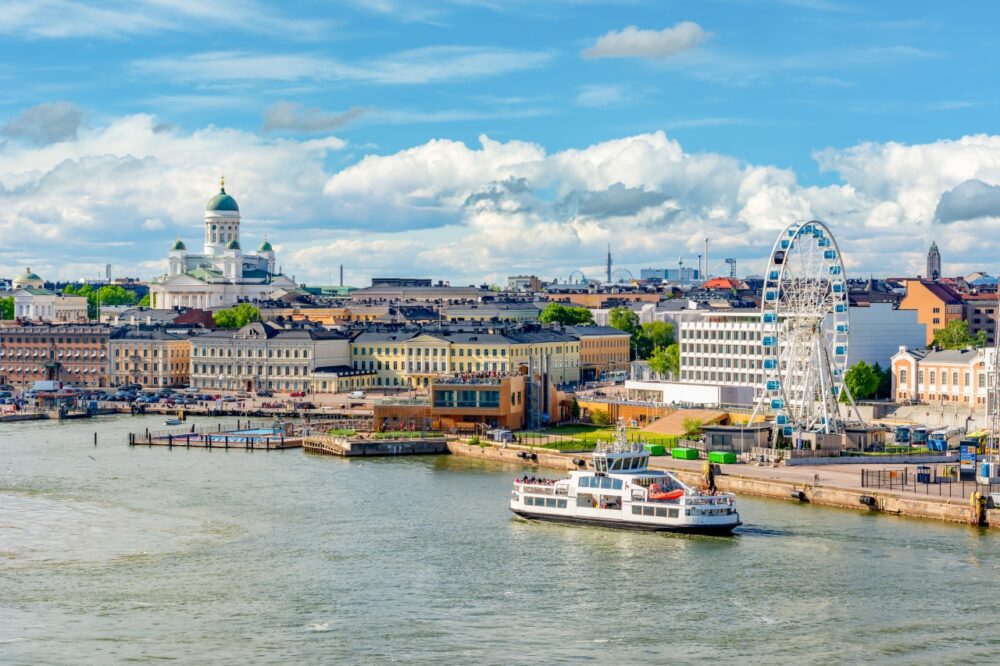
Is Helsinki worth visiting? Without hesitation, yes! When I first explored Helsinki, I was struck by its refreshing blend of Nordic cool and warm hospitality. From its sleek modern architecture to its stunning seaside views, Helsinki feels both contemporary and deeply connected to nature. Whether I was enjoying a relaxing sauna or exploring its design-forward neighbourhoods, Helsinki left me with a strong sense of why it’s one of Scandinavia’s most captivating capitals.
Located on the southern coast of Finland, Helsinki is a city that offers something for everyone. Known for its unique mix of modern innovation and traditional Finnish culture, it’s a place where you can marvel at iconic landmarks like the Helsinki Cathedral and the striking Oodi Library, then relax with a coffee in one of its many cosy cafés. The city’s proximity to the Baltic Sea and its many green spaces make it a haven for outdoor lovers, while its bustling markets and creative scene ensure there’s plenty to discover. But is Helsinki worth visiting for you?
In this blog post, we’ll dive into the top 10 reasons why Helsinki should be on your travel list, from its stunning landmarks to its relaxed, design-focused lifestyle. We’ll also share travel tips to help you make the most of your visit. Keep reading to find out why Helsinki is a city that deserves your attention.
Table of Contents
Pros – Reasons You Should Visit Helsinki
1. A Perfect Blend of Nature and Urban Life
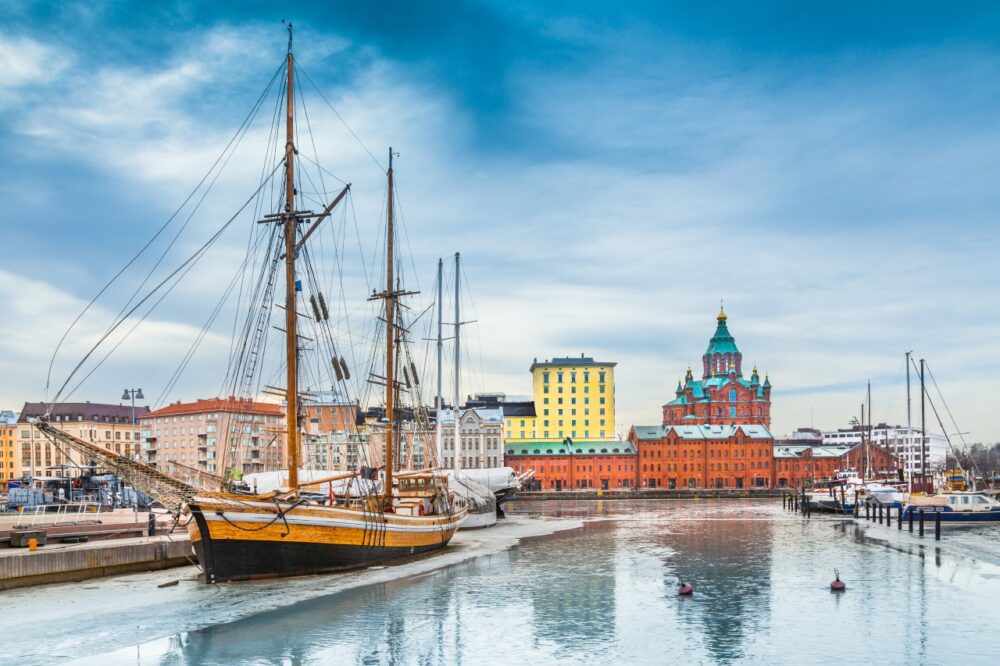
Helsinki is a city that seamlessly combines modern urban living with stunning natural surroundings. With its location on the Baltic Sea and its abundance of green spaces, the Finnish capital offers a perfect balance between city life and outdoor adventures.
I was amazed by how easy it was to escape into nature without ever leaving the city. Just a short tram ride from the centre, I found myself in a peaceful forested park with walking trails leading to the waterfront. Whether you’re strolling through Esplanadi Park, exploring the islands of the Helsinki archipelago, or simply enjoying a quiet moment by the harbour, Helsinki’s connection to nature is one of its biggest charms.
2. A Stunning and Unique Architectural Landscape
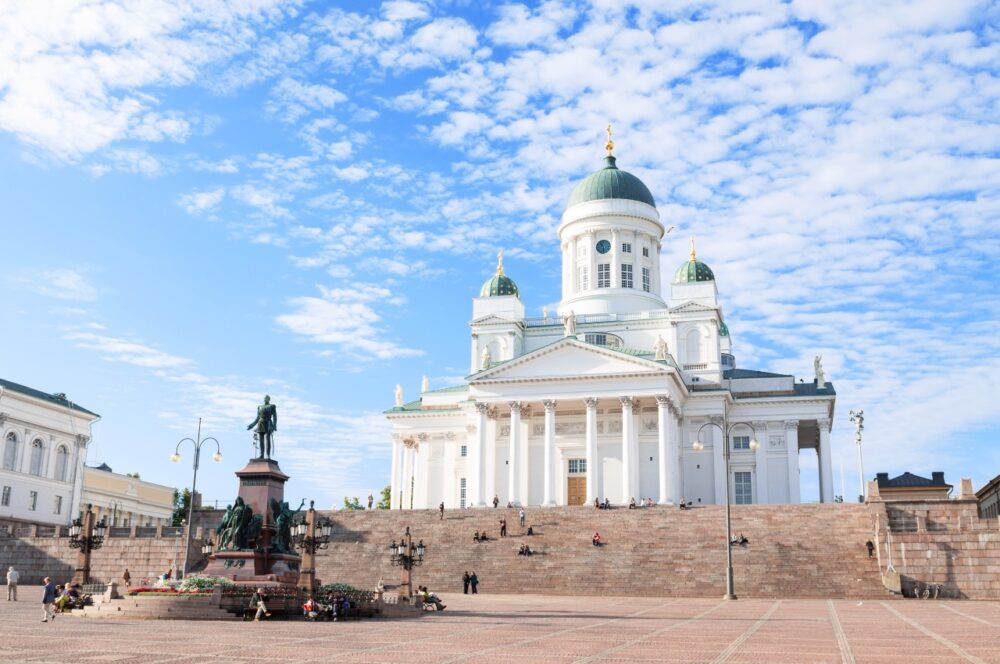
Helsinki’s architecture is a fascinating mix of neoclassical buildings, Art Nouveau masterpieces, and cutting-edge modern design. The city’s unique aesthetic makes it one of the most visually interesting capitals in Europe.
One of my favourite spots was Senate Square, where the grand Helsinki Cathedral stands tall with its bright white façade and green domes. In contrast, the ultra-modern Oodi Library, with its futuristic wooden curves, showed me how innovative Finnish design can be. Whether you love historic landmarks or contemporary structures, Helsinki has something to impress you.
3. The Sauna Culture is Unlike Anywhere Else in the World
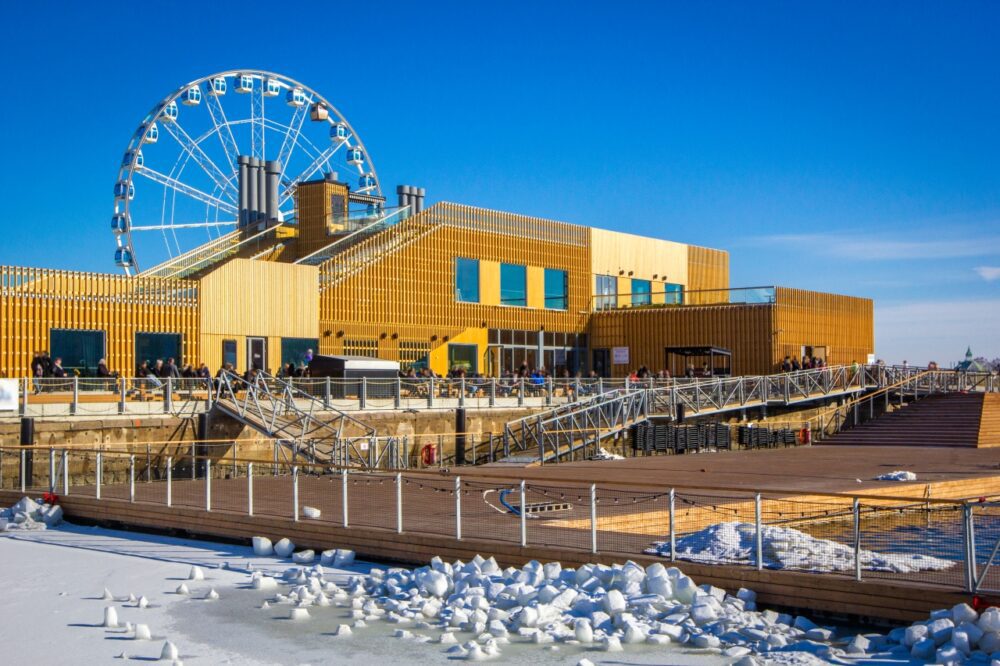
Saunas are an essential part of Finnish culture, and Helsinki offers plenty of opportunities to experience them first-hand. With over three million saunas in Finland (more than one per household), they are considered a place for relaxation, socialising, and even conducting business meetings.
I visited Löyly, one of Helsinki’s most famous public saunas, where I enjoyed the traditional wood-heated sauna before taking a plunge into the icy Baltic Sea. The contrast between the heat and the cold water was invigorating, and I immediately understood why Finns love this ritual so much. Whether you visit a modern design sauna or a rustic, old-fashioned one, experiencing a Finnish sauna is a must in Helsinki.
4. A Vibrant and Creative Design District
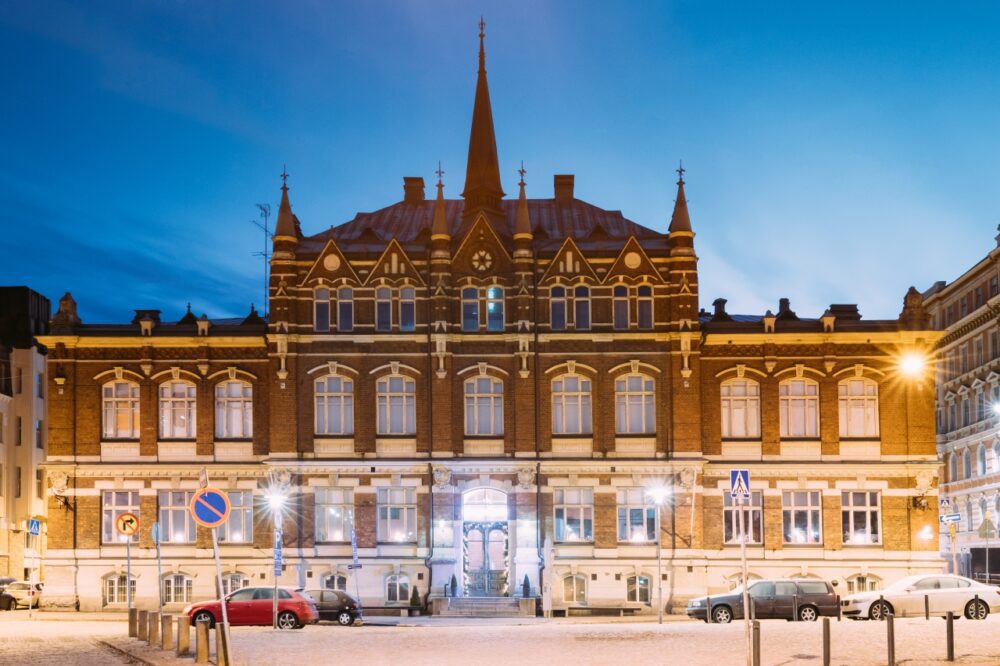
Helsinki is a UNESCO City of Design, and its Design District is a paradise for anyone interested in art, fashion, and craftsmanship. This area is packed with independent boutiques, stylish furniture shops, innovative fashion brands, and cutting-edge galleries showcasing Finnish creativity.
I spent hours wandering through the Design Museum and browsing the small shops filled with beautifully crafted homeware and textiles. Finnish design is known for its simplicity and functionality, and whether it’s in fashion, furniture, or graphic design, you can see this aesthetic everywhere in Helsinki. If you appreciate stylish and well-made products, this is the perfect place to explore.
5. The Helsinki Archipelago is a Stunning Escape from the City
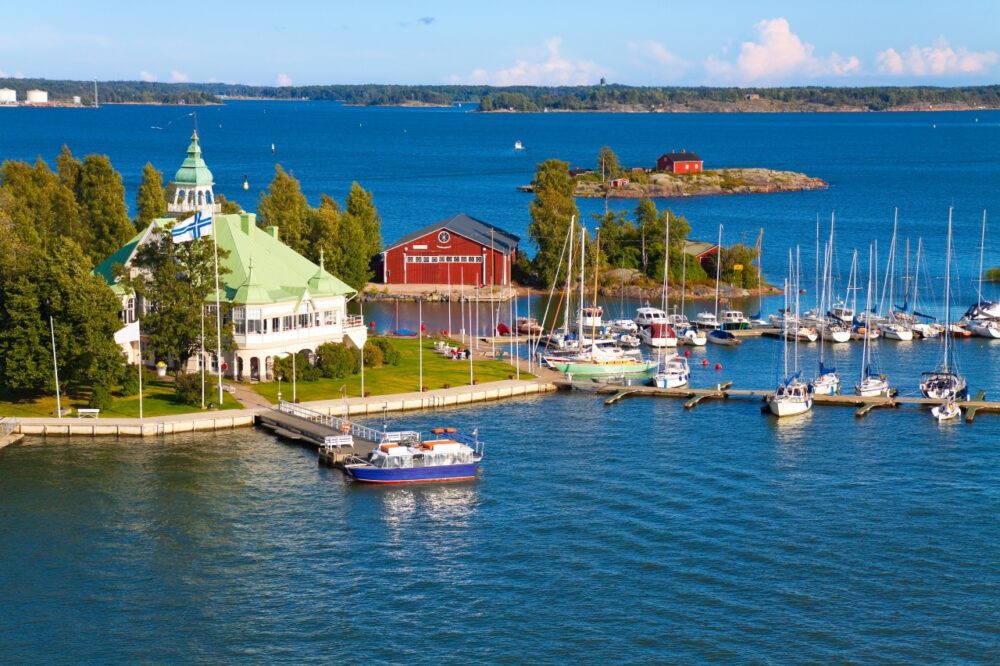
Helsinki is surrounded by over 300 islands, making it one of the best cities in Europe for exploring nature by boat. The Helsinki archipelago offers beautiful coastal landscapes, peaceful hiking trails, and even historical fortresses, all just a short ferry ride away.
One of my favourite day trips was to Suomenlinna, a UNESCO-listed sea fortress spread across several islands. Walking along the fortress walls, enjoying a picnic by the sea, and learning about Finland’s history made it a perfect escape from the city. For those who prefer untouched nature, smaller islands like Pihlajasaari and Vallisaari offer quiet beaches, forests, and scenic walking paths.
6. Helsinki is One of the Safest and Cleanest Capitals in Europe
Helsinki consistently ranks as one of the safest cities in the world, making it a great destination for solo travellers, families, and anyone looking for a stress-free city break. The crime rate is very low, and the city feels extremely clean and well-maintained.
I felt completely at ease walking around, even at night, and never once worried about pickpockets or scams. The public transport was spotless, the streets were litter-free, and even the air felt fresh thanks to the city’s many green spaces. Compared to other European capitals, Helsinki’s sense of safety and cleanliness was truly remarkable.
7. The Public Transport System is Efficient and Easy to Use
Helsinki has an excellent public transport system, with trams, buses, metro, and ferries making it easy to get around the city and beyond. The network is well-connected, reliable, and simple to navigate, even for first-time visitors.
I loved how seamlessly the transport system worked. I could hop on a tram in the city centre, take a ferry to an island, and then ride the metro back to my accommodation—all with the same travel card. Helsinki’s compact size also means that you can explore much of the city on foot, but for longer distances, public transport is a fantastic option.
8. A Fascinating Coffee Culture with Some of the Best Cafés in Europe
Finns are the biggest coffee drinkers in the world, and Helsinki has an incredible café culture to match. The city is filled with cosy, stylish cafés serving high-quality coffee, delicious pastries, and warm, inviting atmospheres.
I stopped at Café Regatta, a charming little red wooden cottage by the sea, where I enjoyed a cup of Finnish coffee and a freshly baked cinnamon bun while sitting by the fire. Later, I explored some of the city’s trendy third-wave coffee spots, where baristas were passionate about their craft and served some of the best brews I’ve ever tasted. Whether you prefer a traditional coffeehouse or a hip specialty café, Helsinki has something for every coffee lover.
9. Helsinki’s Food Scene is Innovative and Delicious
Finnish cuisine is often overlooked, but Helsinki’s food scene is full of exciting and delicious surprises. The city has embraced Nordic flavours while adding a modern twist, making it an excellent place for food lovers.
I tried some incredible local dishes, including reindeer meat, fresh salmon, and creamy mushroom soup, all made with high-quality, seasonal ingredients. The Market Square was a great place to sample traditional Finnish street food, while modern restaurants like Olo and Savotta showcased the city’s contemporary fine dining scene. If you enjoy fresh, locally sourced food, Helsinki is a fantastic place to eat.
10. The Midnight Sun in Summer and the Magical Winter Atmosphere

Helsinki offers two completely different experiences depending on when you visit. In summer, the city enjoys long daylight hours, with the sun barely setting in June and July, creating a lively and energetic atmosphere. In contrast, winter transforms Helsinki into a magical snow-covered city, with Christmas markets, ice skating, and cosy cafés providing warmth against the cold.
I visited during the summer and loved the endless daylight, which made it possible to explore the city at any hour. But I can imagine that winter has its own charm, with festive lights twinkling in the snow and the possibility of catching a glimpse of the northern lights. Whether you prefer long, bright summer nights or a winter wonderland, Helsinki offers a unique experience in every season.
Cons – Things to Consider When Visiting Helsinki
1. The Cost of Visiting is High Compared to Other European Cities
Helsinki is an expensive city, with prices for accommodation, dining, and transport significantly higher than in many other European destinations. Finland, in general, has a high cost of living, and visitors should expect to pay premium prices for even basic services.
I found that hotel rates in Helsinki were quite steep, especially in the city centre, and eating out at restaurants quickly added up. Even a simple lunch at a casual café was noticeably more expensive than in other European capitals like Berlin or Madrid. While there are ways to save money—such as eating at market halls or using public transport instead of taxis—budget travellers may find Helsinki more challenging than other destinations.
2. The Weather Can Be Unpredictable and Often Cold
Helsinki’s climate is not for everyone, as the city experiences long, dark winters and cool summers. Winters can be particularly harsh, with freezing temperatures, heavy snowfall, and limited daylight hours, while summers, though milder, can still be unpredictable, with sudden rain showers and chilly winds.
I visited in early autumn, expecting crisp weather, but was met with sudden temperature drops and persistent rain. Even in the summer months, Helsinki rarely reaches the warm, sunny conditions of southern Europe. If you prefer guaranteed sunshine and beach weather, Helsinki might not be the best choice, though it does have its own unique seasonal charm.
3. The City Can Feel Quiet and Lacks a Vibrant Nightlife Scene
Helsinki is not known for its nightlife, and compared to other European capitals, the city can feel quite subdued in the evenings. Many bars and restaurants close earlier than expected, and even the busiest nightlife districts lack the energy of cities like Berlin, Amsterdam, or London.
I went out on a Saturday night expecting a lively atmosphere but found that many bars were fairly quiet, with locals enjoying low-key drinks rather than partying into the early hours. While there are some great cocktail bars and a few nightclubs, Helsinki’s nightlife is more about relaxed socialising than wild partying. If you’re looking for a destination with a thriving club scene, Helsinki may not be the best fit.
4. Limited Daylight in Winter Can Affect Your Experience
One of the biggest challenges of visiting Helsinki in winter is the extremely limited daylight hours. In December, the sun rises late in the morning and sets in the early afternoon, leaving only a few hours of proper daylight for sightseeing. This can make it difficult to fit in outdoor activities and can affect mood and energy levels.
I experienced a grey, overcast afternoon where it felt like twilight the entire day. While the city does its best to create a cosy winter atmosphere with warm cafés and festive lights, the darkness can be a drawback for visitors who prefer bright, sunny destinations. If you’re visiting during winter, planning indoor activities and making the most of the limited daylight is essential.
5. The Local Culture Can Feel Reserved to Some Visitors
Finnish people are known for their quiet and reserved nature, which can sometimes be misinterpreted as unfriendliness. Unlike in southern European countries, where social interactions are often lively and animated, Finns tend to be more private and value personal space.
I noticed that while people were polite and helpful, casual small talk with strangers was rare, and customer service interactions were often efficient rather than overly warm. This isn’t necessarily a bad thing—it’s just a cultural difference—but visitors who are used to more outgoing and expressive hospitality might find Helsinki’s atmosphere a bit reserved. That said, once you engage with locals, they are often incredibly kind and welcoming in their own way.
When to Visit Helsinki
The best times to visit Helsinki are late spring (May to June) and early autumn (September) when the weather is mild, the parks and waterfronts are vibrant, and crowds are manageable. Summer (July and August) is peak season, with warm temperatures, endless daylight from the “white nights,” and a full calendar of outdoor festivals, including the lively Helsinki Festival in August. However, prices and crowds are at their highest. Winter in Helsinki is dark and cold, but for those who love snow and cosiness, December brings a charming holiday atmosphere with Christmas markets, while February’s Lux Helsinki lights up the city with stunning art installations.
How to Get to Helsinki
Helsinki-Vantaa Airport (HEL) is Finland’s main international gateway, located around 18 kilometres from the city centre. The airport is well connected by airlines like Finnair, SAS, Norwegian, and Lufthansa. The train is one of the easiest and most affordable ways to reach the city centre from the airport, with the I and P trains taking around 30 minutes. Alternatively, the Finnair City Bus and other local buses run frequent routes to the city, and taxis are also available for a quicker but more expensive option. Helsinki is also accessible by ferry, with routes from Tallinn, Stockholm, and St. Petersburg.
Where to Stay in Helsinki
Helsinki offers diverse accommodation options, each neighbourhood with its own character and appeal:
- Luxury: Kaartinkaupunki – Near the Esplanade and South Harbour, this area is ideal for luxury travellers who want to be close to shops, fine dining, and cultural attractions. Options include the Hotel Kämp and St. George Hotel, both offering top-tier service and modern elegance.
- Mid-range: Kamppi – A central district with easy access to the main attractions, shopping, and nightlife. The Radisson Blu Royal Hotel and Hotel Helka offer comfort and style at reasonable rates.
- Budget: Kallio – A hip, bohemian neighbourhood northeast of the centre with a lively mix of cafes, vintage shops, and bars. Budget-conscious travellers will find affordable options like SweetDream Guesthouse and CheapSleep Hostel, ideal for a vibrant yet economical stay.
Getting Around Helsinki
Helsinki is known for its efficient and well-connected public transport system, with trams, buses, metro lines, and ferries operated by HSL. A single ticket or day pass is valid across all forms of public transport, making it an economical way to explore the city. The tram network is particularly useful for visitors, as it connects most of the major sights and is both efficient and scenic. Helsinki also has an extensive bike-sharing system, City Bikes, which is popular in warmer months, with docking stations scattered throughout the city. Walking is also a pleasure, especially around the compact centre and along the waterfront promenades.
How Long to Spend in Helsinki
Three days is ideal for exploring Helsinki’s main highlights, including Senate Square, Temppeliaukio Church, and the Suomenlinna Fortress. With three days, you’ll have time to dive into Finnish design at Design District Helsinki and sample local flavours at the Old Market Hall. An extra day allows for a visit to Seurasaari Open-Air Museum or a short trip to the nearby archipelago islands. If you’re visiting in winter and keen to explore more of Finland, consider extending your stay to include a day trip to Nuuksio National Park or Porvoo for a taste of Finland’s natural beauty and charming small towns.
Conclusion
So, is Helsinki worth visiting? Absolutely! With its striking architecture, rich Finnish traditions, and deep connection to nature, Helsinki offers a truly unique travel experience. Highlights like the iconic cathedral, the inviting saunas, and the vibrant market halls make it a destination that stands out in Scandinavia. While it can be a bit pricey, the quality of experiences and the city’s peaceful yet dynamic atmosphere make it well worth the investment. If you’re ready to explore a city that combines Nordic charm with modern innovation, start planning your trip to Helsinki today—you won’t be disappointed!
